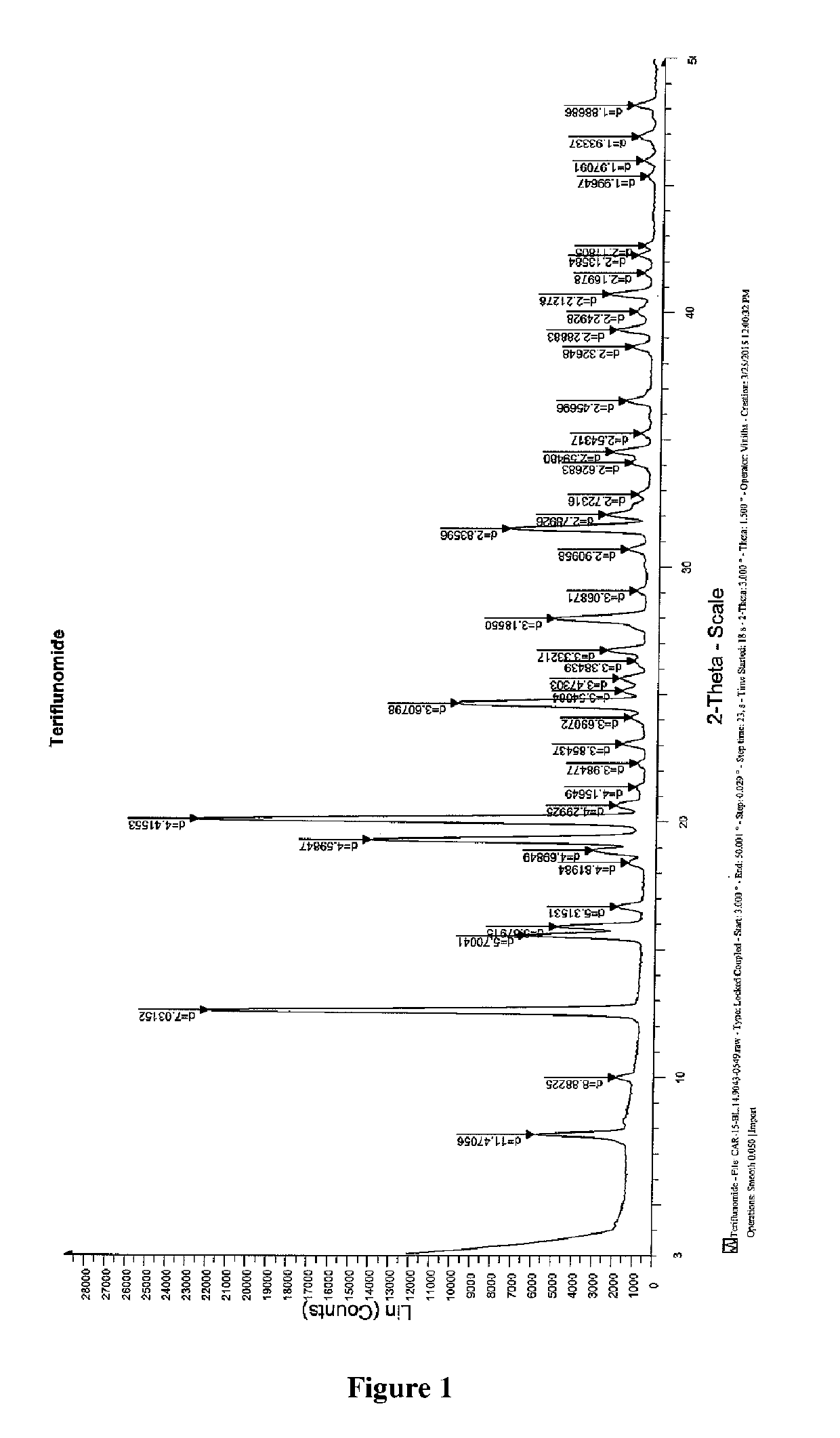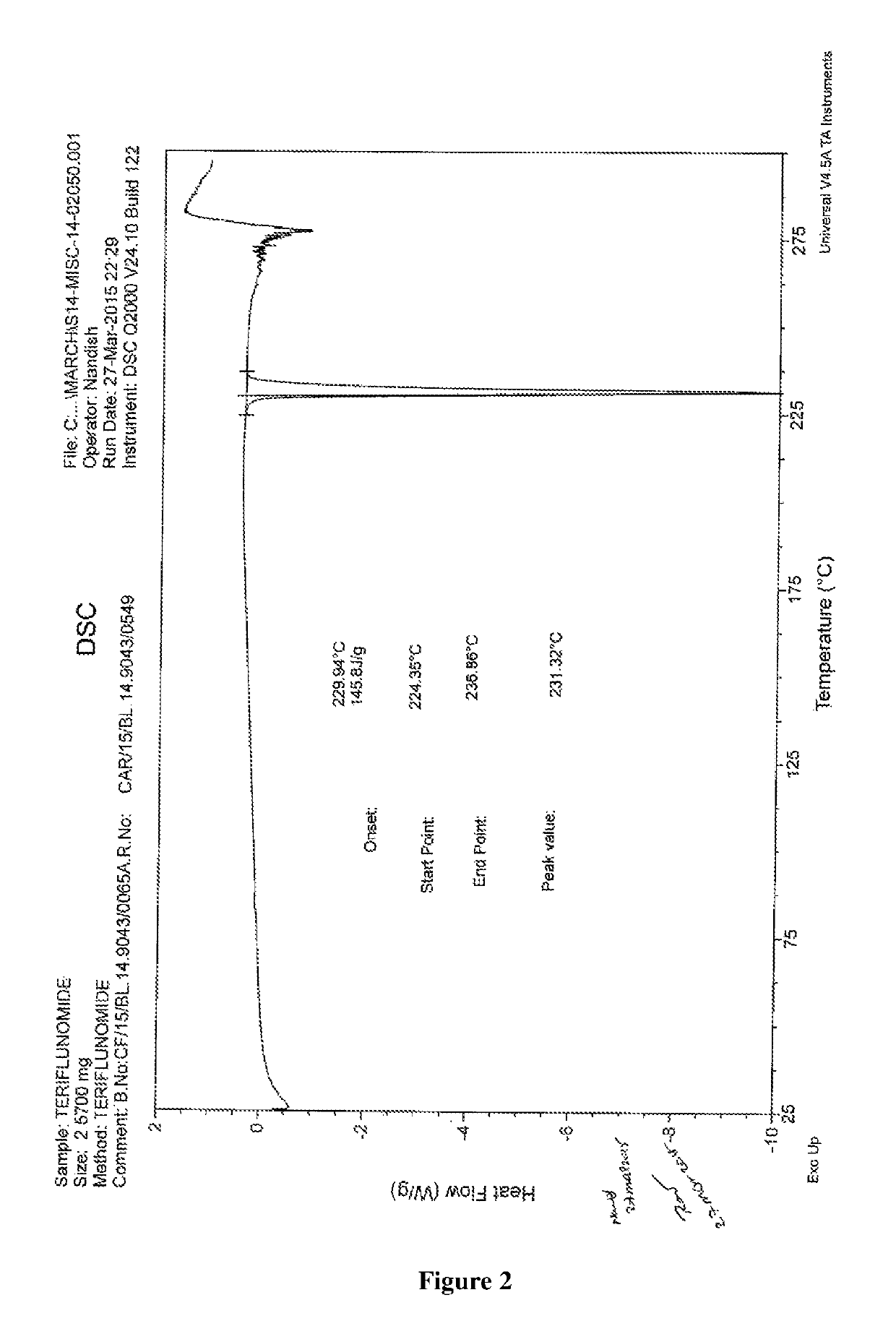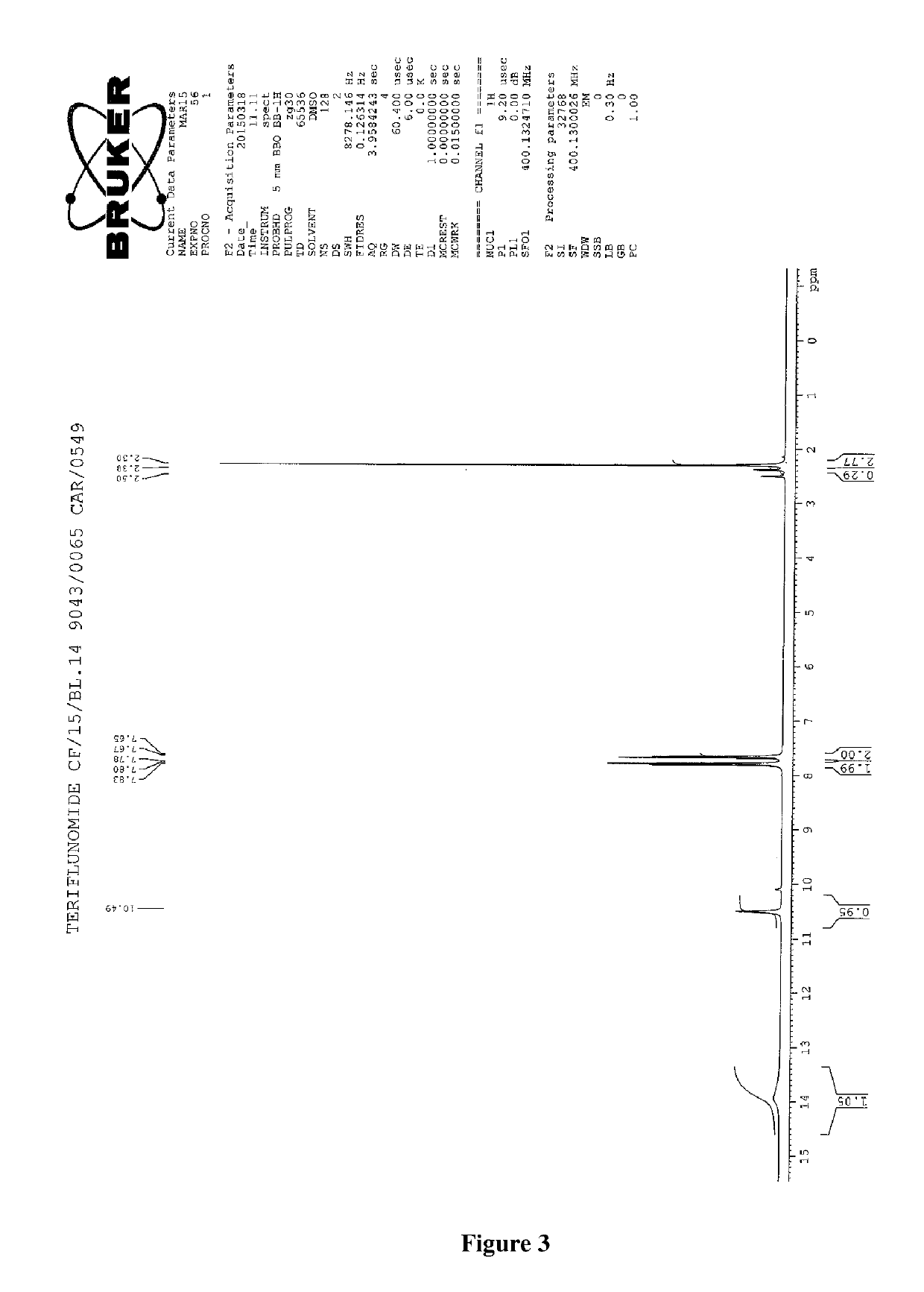Process for the preparation of teriflunomide
a technology of teriflunomide and teriflunomide, which is applied in the field of process for the preparation of teriflunomide, can solve the problems of loss of product, unsuitable use of dimethyl acetamide, and isolating, and achieves the effect of higher yield and purity
- Summary
- Abstract
- Description
- Claims
- Application Information
AI Technical Summary
Benefits of technology
Problems solved by technology
Method used
Image
Examples
example 1
on of 5-Methylisoxazole-4-carbonyl chloride [Formula-IV]
[0117]A round bottomed flask equipped with a mechanical stirrer, condenser, thermometer pocket and a stopper were added 5-Methylisoxazole-4-carboxylic acid [Formula-V] (75.0 g, 0.59 mol) and Toluene (225 mL). The slurry was added with Thionyl chloride (140.41 g, 1.18 mol) and the reaction mixture was gradually heated to 75±5° C. and stirred at same temperature for 10-12 h. The progress of the reaction was monitored by HPLC (Acid chloride was analyzed as corresponding methyl ester by quenching the sample in methanol). After the completion of reaction, the reaction mixture was concentrated under reduced pressure at 55±5° C. to afford 5-Methylisoxazole-4-carbonyl chloride of Formula-IV as a liquid.
example 1a
n of 5-Methylisoxazole-4-carbonyl chloride [Formula-IV]
[0118]A round bottomed flask equipped with a mechanical stirrer, condenser, thermometer pocket and a stopper were added 5-Methylisoxazole-4-carboxylic acid (3.00 g, 0.02 mol) and Thionyl chloride (14.66 g, 0.12 mol) and the reaction mixture was gradually heated to 45±5° C. and stirred at same temperature for 2 to 3 h. The progress of the reaction was monitored by TLC (Acid chloride was analyzed as corresponding methyl ester by quenching the sample in methanol). After the completion of reaction, the reaction mixture was concentrated under reduced pressure at 45±5° C. to afford 5-Methylisoxazole-4-carbonyl chloride as a liquid (0.59 mol).
example 2
on of 5-Methyl-N-[4-(trifluoromethyl)phenyl]isoxazole-4-carboxamide (Leflunomide) [Formula-II]
[0119]A round bottom flask equipped with a mechanical stirrer, a condenser, a temperature indicator and an additional funnel was charged with 4-(Trifluoromethyl) aniline [Formula-III] (95.08 g, 0.59 mol), Ethyl methyl ketone (150 mL), Cesium carbonate (144.19 g, 0.44 mol) and water (150 mL). The reaction mixture was heated to 45±2° C. A solution of 5-Methylisoxazole-4-carbonyl chloride [Formula-IV] (from Example-1) in Ethyl methyl ketone (75.0 mL) was slowly added into the reaction mixture at 55±10° C. and stirred for 1 h. Progress of the reaction was monitored by HPLC. After completion of the reaction, the resultant reaction mixture was cooled to room temperature and the layers were separated. The organic (ethyl methyl ketone) layer containing 5-Methyl-N-[4-(trifluoromethyl) phenyl] isoxazole-4-carboxamide (Leflunomide) [Formula-II] was taken to the ring opening without isolation.
PUM
| Property | Measurement | Unit |
|---|---|---|
| temperature | aaaaa | aaaaa |
| temperature | aaaaa | aaaaa |
| temperature | aaaaa | aaaaa |
Abstract
Description
Claims
Application Information
 Login to View More
Login to View More - R&D
- Intellectual Property
- Life Sciences
- Materials
- Tech Scout
- Unparalleled Data Quality
- Higher Quality Content
- 60% Fewer Hallucinations
Browse by: Latest US Patents, China's latest patents, Technical Efficacy Thesaurus, Application Domain, Technology Topic, Popular Technical Reports.
© 2025 PatSnap. All rights reserved.Legal|Privacy policy|Modern Slavery Act Transparency Statement|Sitemap|About US| Contact US: help@patsnap.com



